Mexico is the southernmost country in North America. The nation comprises 31 states and covers more than 760,000 square miles.
Mexico provides a convenient land bridge from the United States to Central and South America, making it useful for travel and trade. According to the United States Department of State, the country is the top foreign destination for U.S. travelers. Millions of Americans visit Mexico annually for its warm beaches, historical sites, and lively culture.
While the proximity between the two may lead some to believe the countries are similar, the truth is they have stark differences. For example, each country has a unique array of wildlife. Not all animals belonging to the U.S. live in Mexico, and vice versa. And like the U.S., the wildlife found in Mexico varies by each state and their distinct climates.
A point of conflicting opinion among reptile-loving communities is whether alligators or crocodiles exist in Mexico. If so, which species and where?
Mexico’s Weather and Climate
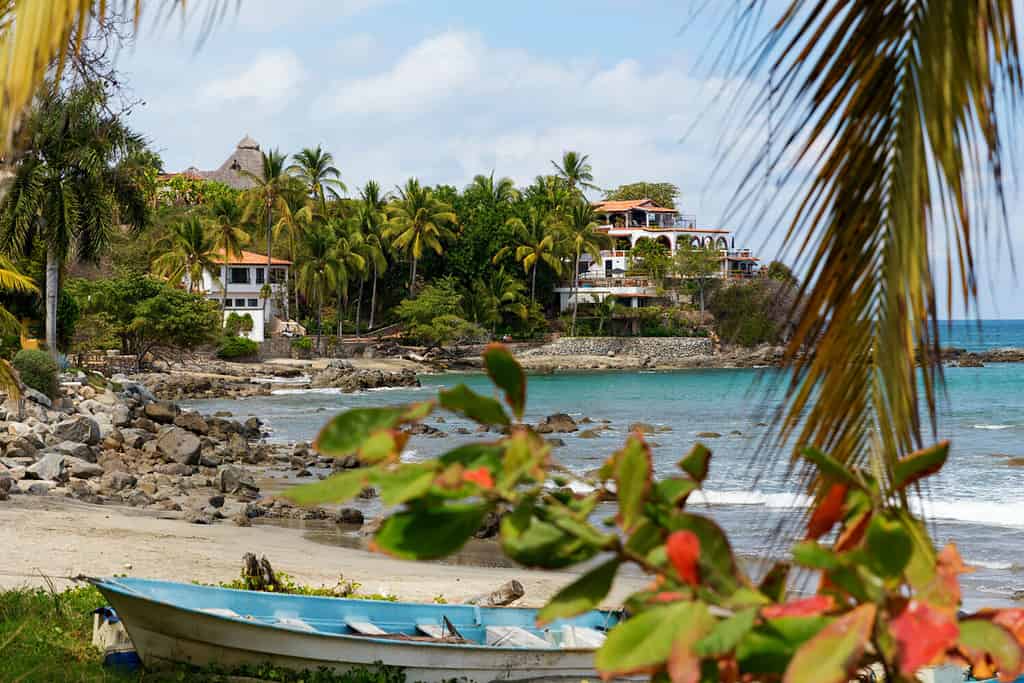
The unique location of Mexico allows for a vast number of climates.
©zstock/Shutterstock.com
The Tropic of Cancer cuts through Mexico, so the country’s weather varies. The northern states have more arid and semi-arid climates, while the southern half includes temperate and tropical zones. Because Mexico sits between the Pacific Ocean to the east and the Gulf of Mexico to the west, it rains frequently in most areas.
The wildlife in Mexico depends on each zone’s climate. Rainforests, valleys, mountains, and shorelines are all home to unique species that you can’t find anywhere else in the world.
Are There Alligators in Mexico?

Alligators inhabit many states in the southern United States, though none appear in Mexico.
©iStock.com/Cindy Larson
Are there alligators in Mexico? The short answer is no. Only two species of alligators exist in the wild in the entire world. These are the American alligator (Alligator mississippiensis) and the Chinese alligator (Alligator sinensis). While there isn’t a species of alligator native to Mexico, the American version of the reptile frequently inhabits Texas near its coast.
Are There Alligators in the Gulf of Mexico?
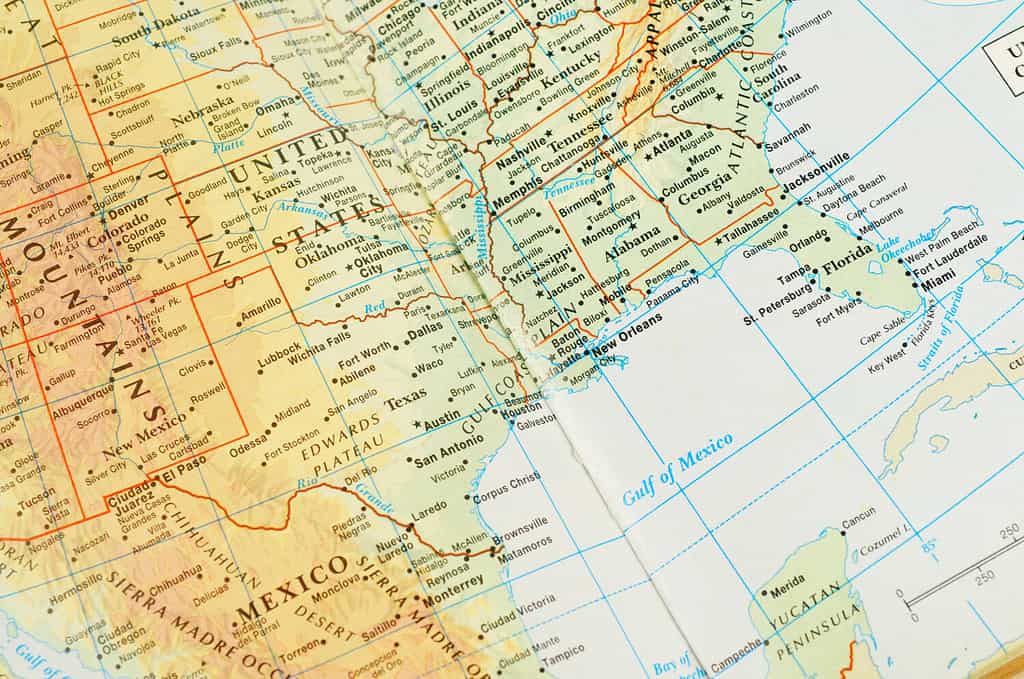
Sightings of alligators on the Mexican side of the Gulf of Mexico are unsubstantiated.
©Gualberto Becerra/Shutterstock.com
According to the Texas Department of Transportation, Texas shares more than 1,200 miles of border with Mexico. Since 1848, the Rio Grande River has provided a visible marker of the boundary between the United States and Mexico.
The Rio Grande River lines the entire south and southwest parts of Texas, emptying in the Gulf of Mexico in the east. The two waterways join in a slim band between Brownsville in Texas and Matamoros in Mexico.
American alligators do appear in parts of the Gulf of Mexico—sometimes even on beaches in the summer—though rarely. While freshwater reptiles, there are several reasons why alligators could surprisingly appear in saltwater environments. Heavy rainfall, including hurricanes, can increase the amount of fresh water in the ocean. Massive floods can also carry freshwater alligators to saltier bays and beaches.
Once the stormy waterways are back to normal, alligators can become trapped in their new saltwater environments. Like most reptiles, alligators enjoy warmer temperatures, and beaches are an ideal environment in the summer for mating and nesting. Alligators are also indiscriminate predators, and will pretty much eat whatever they can catch. A study published in 2017 showed alligators even feasting on sharks and stingrays in the southeastern U.S.
The Spectacled Caiman in Mexico
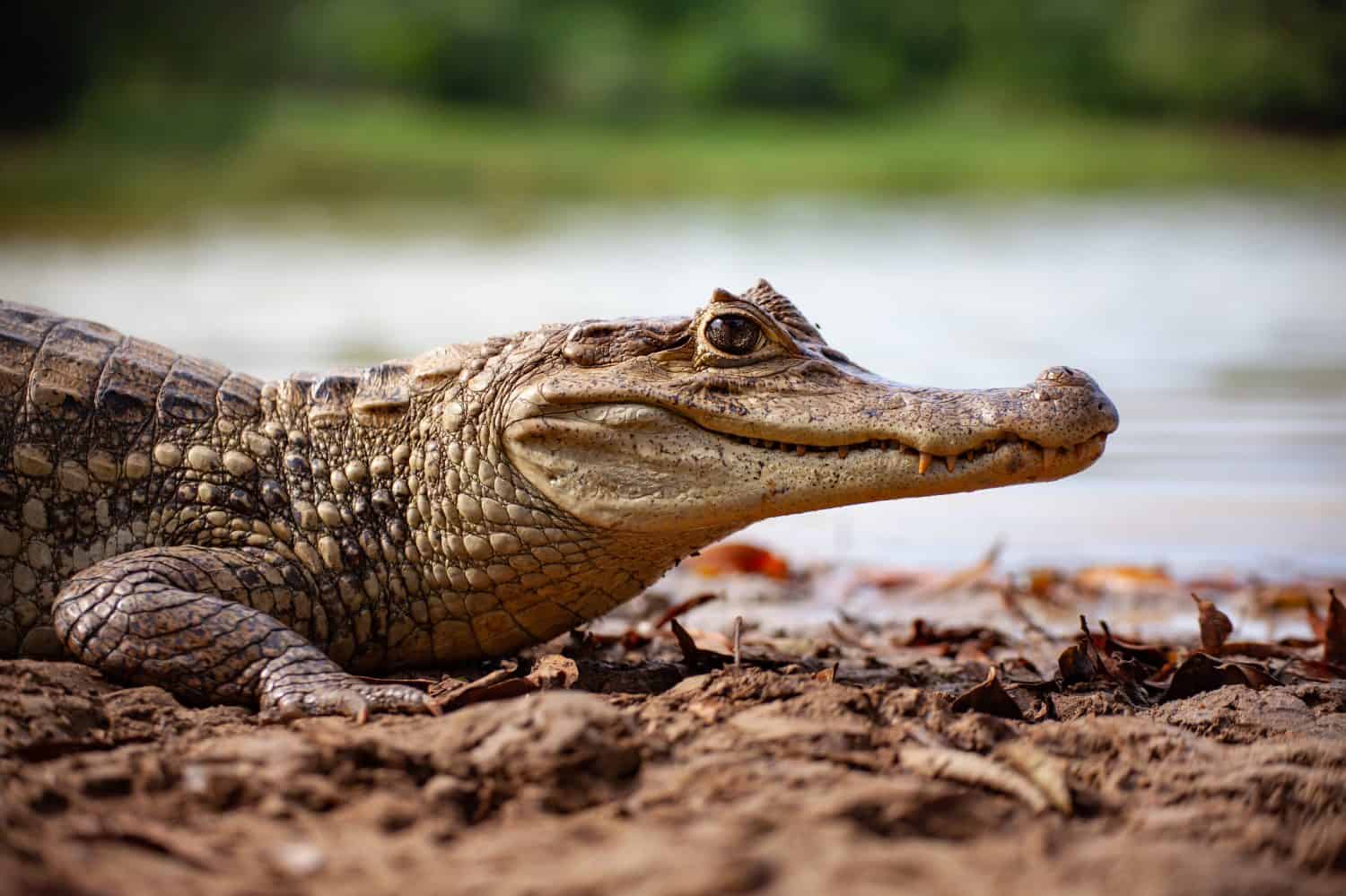
The spectacled caiman and American
crocodile
are easy to confuse with the American alligator at a distance.
©petegog/Shutterstock.com
That said, records of alligators on the Mexican side of the Rio Grande Valley are inconclusive. Reported sightings of alligators in marshes or on beaches are sparse. Even so, it’s possible witnesses mistook them for the similar crocodile or caiman.
The closest animal to an alligator in Mexico is the spectacled caiman (Caiman crocodilus). Despite being in the order of Crocodilia, caiman are members of the Alligatoridae family, which includes the American alligator. In contrast, crocodiles are members of the Crocodylidae family. The name of the spectacled caiman has understandably confused throughout its history. Some scientists prefer using its former name Caiman sclerops to avoid misunderstanding.
The American Crocodile in Mexico
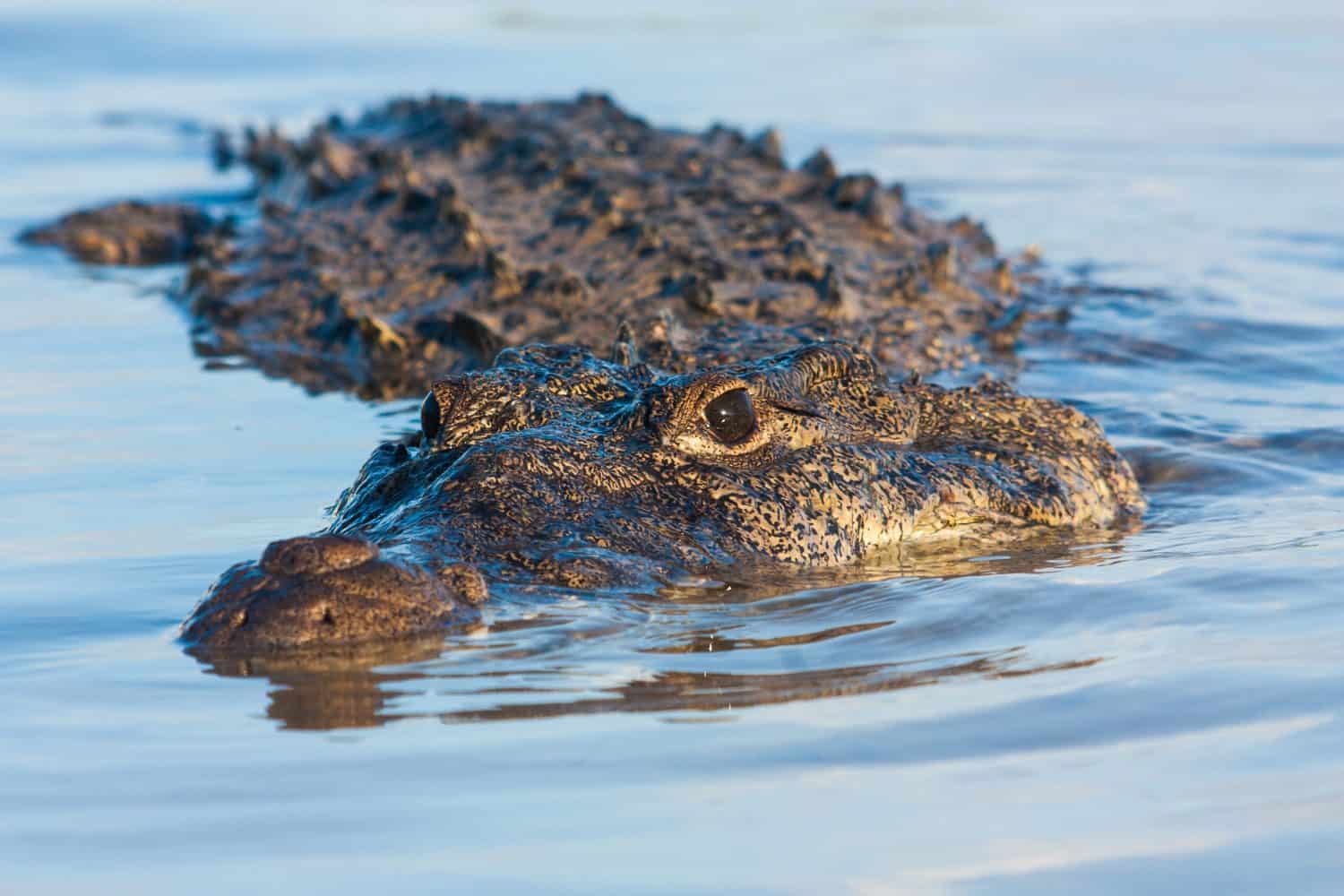
The American crocodile has a heavy presence on both sides of Mexico’s coasts.
©Leonardo Gonzalez/Shutterstock.com
While easy to confuse at a distance, alligators and crocodiles have distinct markers that make them less challenging to identify up close. While there is no confirmation of alligators anywhere in Mexico, crocodiles are happy to make the country their home.
American crocodiles reside predominantly on the western side of Mexico which connects to the Pacific Ocean. Their presence begins at the northern state of Sinaloa, extending southward along the Pacific coast. The population area reaches the southernmost states of Oaxaca and Chiapas before wrapping around the Yucatán Peninsula. This peninsula includes the states of Campeche, Quintana Roo, and Yucatán. It also connects Mexico to the Central American countries of Belize and Guatemala.
An isolated population of American crocodiles also inhabits the Rio Grijalva basin. The basin flows from Chiapas through the Sumidero Valley into the state of Tabasco before emptying in the Gulf of Mexico. Since they prefer saltier environments, American crocodiles can appear near more populous areas, like the Banderas Bay along the resort town of Puerto Vallarta. During the rainy season, the crocodiles use the bay to connect to the more desirable brackish coastal rivers and mangrove swamps.
Morelet’s Crocodile (Crocodylus moreletii) in Mexico
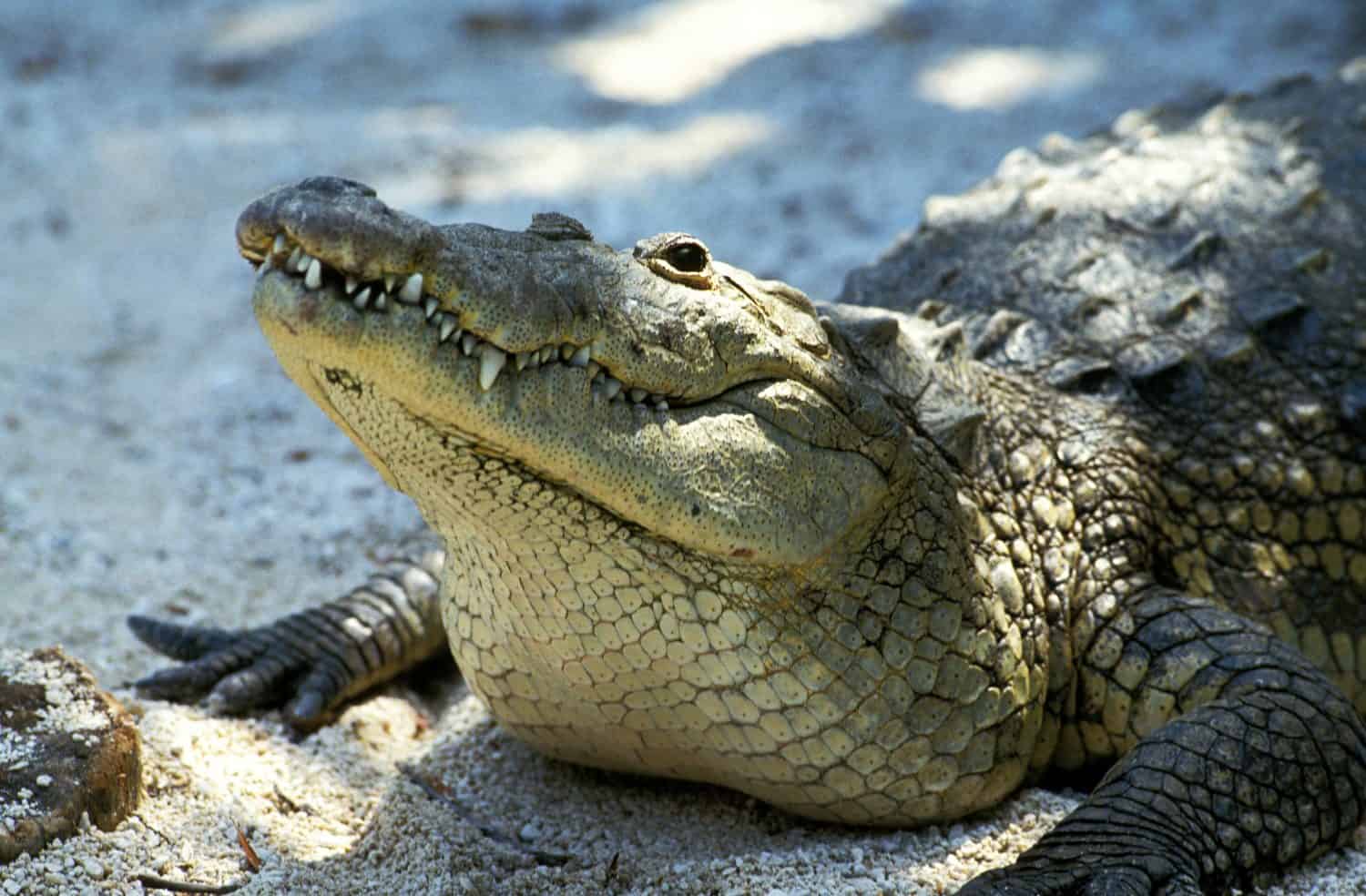
The Morelet’s crocodile only occupies Mexico on its Atlantic coast.
©slowmotiongli/Shutterstock.com
The second—and only other—species of crocodile in Mexico is the Morelet’s crocodile (Crocodylus moreletti). The more common names for this reptile are the Mexican crocodile and the Belize crocodile. Understandably, this particular species appears only on the Atlantic sides of Mexico, Belize, and Guatemala. The Morelet’s crocodile resides along the entire eastern coast of Mexico, extending southward just past the where the Rio Grande River ends in Texas. The most northern Mexican state on that side that hugs the Gulf of Mexico is Tamaulipas.
The Morelet’s crocodile prefer more secluded and inland habitats, such as freshwater swamps or sizable lakes and rivers in forests. Though primarily a freshwater species, there are reports of Morelet’s crocodiles migrating along the brackish coasts during the rainy season.
While the presence of the Morelet’s crocodile doesn’t reach South America like the American species, both populations exist in the Yucatán Peninsula. Because of this, according to the Map of Life biodiversity database, it is entirely plausible that the different factions have crossed paths and even cohabitated. However, limited data exists on the breeding between the two crocodile species. Currently, Belize is the only location where hybridization occurs.
The photo featured at the top of this post is © eskystudio/Shutterstock.com
Thank you for reading! Have some feedback for us? Contact the AZ Animals editorial team.






